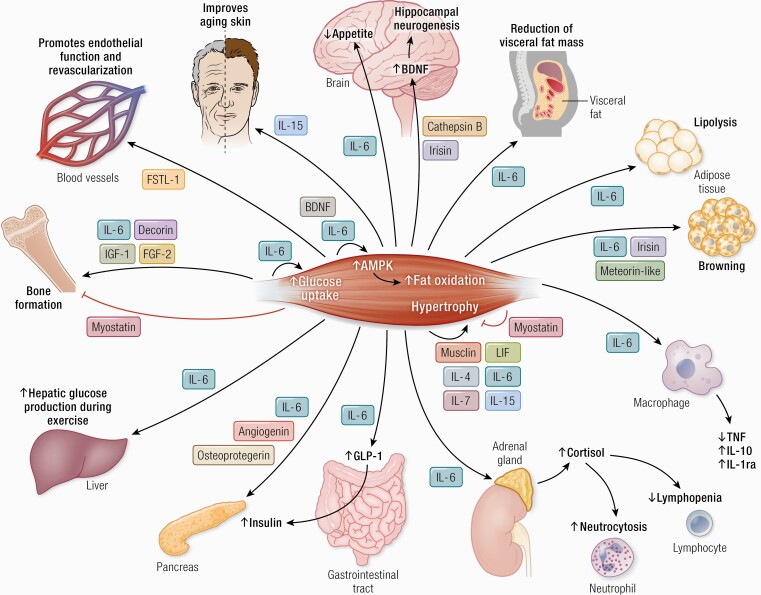Figure 7.
Cathepsin B and irisin cross the blood–brain barrier and stimulate BDNF production and hippocampal neurogenesis. IL-6 stimulates appetite and lipolysis and decreases visceral fat mass. Irisin, meteorin-like, and IL-6 have a role in “browning” of white adipose tissue. IL-15 improves aging skin. Decorin, IL-6, IGF-1 and FGF-2 positively regulate bone formation. Myostatin negatively regulate bone formation. Musclin, LIF, IL-4, IL-6, IL-7, and IL-15 promote muscle hypertrophy. Myostatin inhibits muscle hypertrophy. BDNF and IL-6 are involved in AMPK-mediated fat oxidation. IL-6 enhances insulin-stimulated glucose uptake and stimulates glucose output from the liver, but only during exercise. IL-6 increases insulin secretion by inducing the expression of GLP-1 by the L cells of the intestine. IL-6 has anti-inflammatory effects as it inhibits TNF production and stimulates the production of IL-1ra and IL-10. IL-6 stimulates cortisol production and thereby induces neutrocytosis and lymphopenia. FSTL-1 improves endothelial function and revascularization of ischemic blood vessels. Angiogenin, osteoprotegerin and IL-6 possess pancreatic β-cell protective actions against proinflammatory cytokines. Abbreviations: AMPK, 5′-AMP-activated protein kinase; BDNF, brain-derived neurotrophic factor; FGF-2, fibroblast growth factor 2; FGF-21, fibroblast growth factor 21; FSTL-1, follistatin-related protein 1; GLP-1, glucagon-like peptide 1; IGF-1, insulin-like growth factor I; IL-1ra, IL-1 receptor antagonist; LIF, leukemia inhibitory factor; TGF-β, transforming growth factor β; TNF, tumor necrosis factor.

